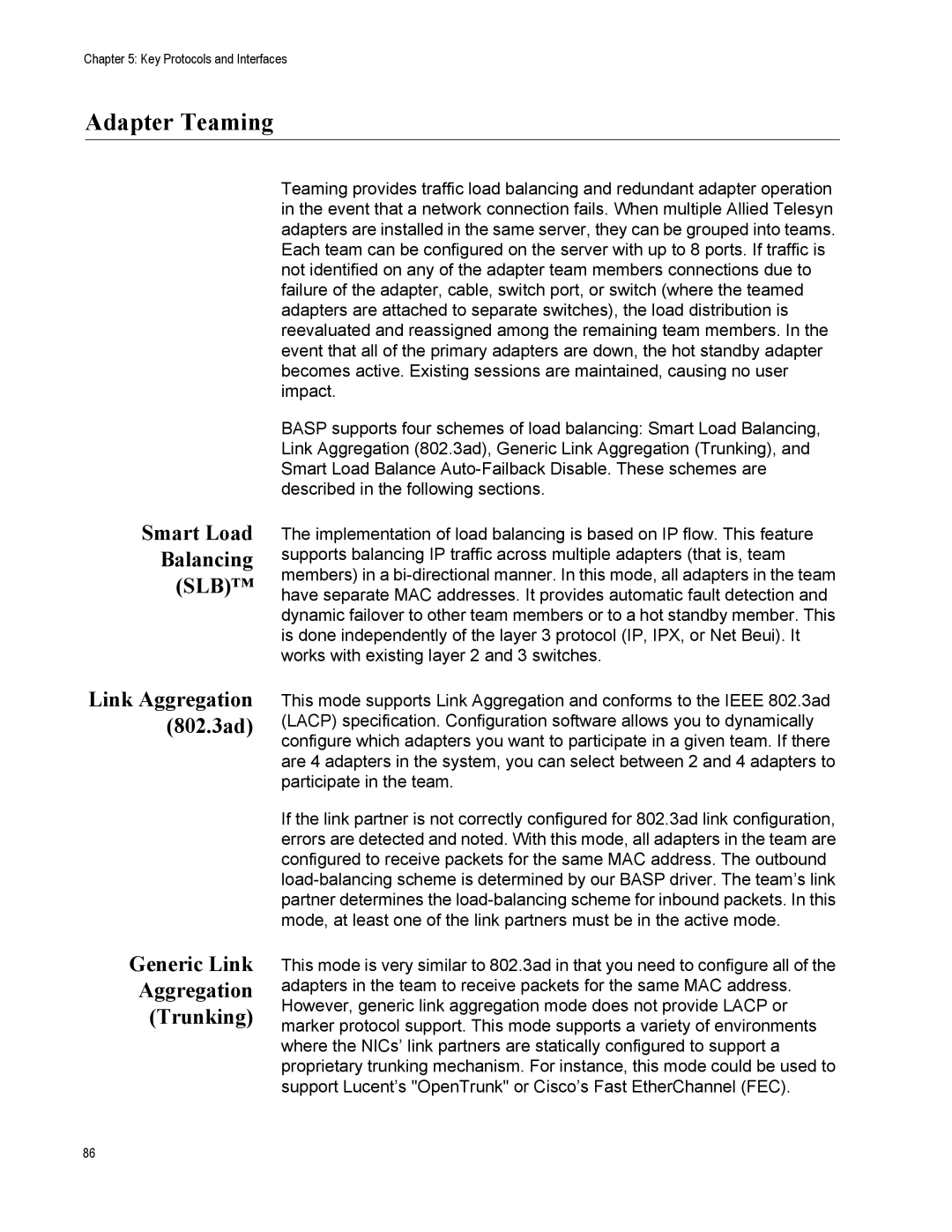Chapter 5: Key Protocols and Interfaces
Adapter Teaming
Smart Load
Balancing
(SLB)™
Link Aggregation (802.3ad)
Generic Link
Aggregation
(Trunking)
Teaming provides traffic load balancing and redundant adapter operation in the event that a network connection fails. When multiple Allied Telesyn adapters are installed in the same server, they can be grouped into teams. Each team can be configured on the server with up to 8 ports. If traffic is not identified on any of the adapter team members connections due to failure of the adapter, cable, switch port, or switch (where the teamed adapters are attached to separate switches), the load distribution is reevaluated and reassigned among the remaining team members. In the event that all of the primary adapters are down, the hot standby adapter becomes active. Existing sessions are maintained, causing no user impact.
BASP supports four schemes of load balancing: Smart Load Balancing, Link Aggregation (802.3ad), Generic Link Aggregation (Trunking), and Smart Load Balance
The implementation of load balancing is based on IP flow. This feature supports balancing IP traffic across multiple adapters (that is, team members) in a
This mode supports Link Aggregation and conforms to the IEEE 802.3ad (LACP) specification. Configuration software allows you to dynamically configure which adapters you want to participate in a given team. If there are 4 adapters in the system, you can select between 2 and 4 adapters to participate in the team.
If the link partner is not correctly configured for 802.3ad link configuration, errors are detected and noted. With this mode, all adapters in the team are configured to receive packets for the same MAC address. The outbound
This mode is very similar to 802.3ad in that you need to configure all of the adapters in the team to receive packets for the same MAC address. However, generic link aggregation mode does not provide LACP or marker protocol support. This mode supports a variety of environments where the NICs’ link partners are statically configured to support a proprietary trunking mechanism. For instance, this mode could be used to support Lucent’s "OpenTrunk" or Cisco’s Fast EtherChannel (FEC).
86
